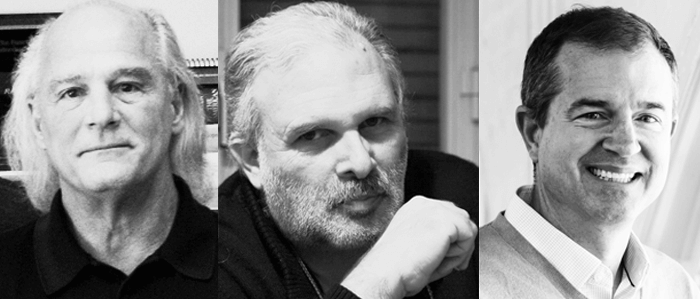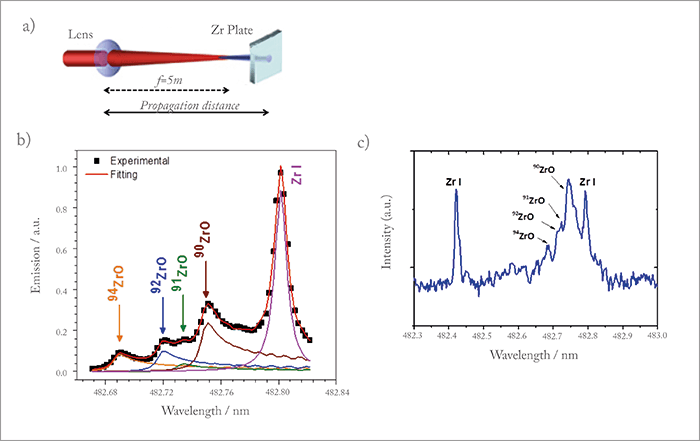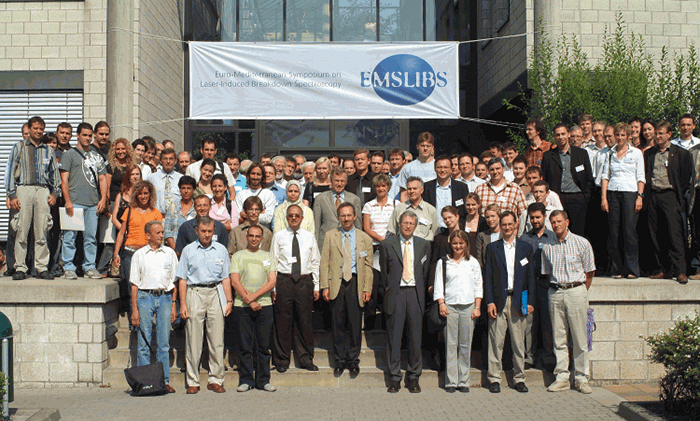What have the past 20 years of LIBS brought us?
David Hahn: The last 20 years have brought a much deeper understanding of the physics behind LIBS, notably with regard to the fundamental processes of analyte transport (such as dissociation and diffusion), excitation, homogeneity within the plasma, and equilibrium. We can draw a parallel to the development of ICP. Vincenzo Palleschi: I’ve been working in LIBS for more than a quarter-century (my first LIBS paper was published in 1990), and the progress in understanding the processes involved in LIBS has been outstanding. In many cases, the theoretical framework was already present in the literature; however, the peculiar characteristics of the LIBS technique (based on the complex interplay of laser, plasma and sample) have required great efforts to interpret. As a consequence, we can now tune our systems according to the application, optimizing the experimental parameters, such as laser wavelength, pulse duration, focal length of the focusing system, and so on. Today, LIBS analysis has moved to many fields that were difficult to imagine 25 years ago. But this is not necessarily a good thing… Richard Russo: I guess I’m the odd one out here, because I feel that the theory has only somewhat evolved, yet applications are proliferating. The community has delved into fundamental physics of laser plasmas and gained a good understanding of time resolved phenomena; however, we still cannot predict the response. We do not know what amount of mass will be ablated and what percentage will be heated to emission – a complicated problem considering the spatial and temporal aspects of the transient plasma. The LIBS technique is straightforward from an experimental point of view, which is both a blessing and a curse – as Vincenzo alludes to. Why? Because anyone can focus a pulsed laser on any sample and create a plasma. But good analytical chemistry requires experience of how the plasma spectroscopy relates to the sample chemistry. LIBS is no different than arc/spark spectroscopy in principle – it is all atomic emission spectroscopy. To advance LIBS for routine applications, we need to use the same principles that have made arc/spark a mainstay in many applications.Richard E Russo Rick Russo has studied the fundamental properties of laser material interactions and related applications for over 30 years. Since 1982, he has held various positions at the Lawrence Berkeley National Laboratory in Berkeley, California, where he is currently a Senior Scientist. Rick is also CEO and founder of Applied Spectra. Vincenzo Palleschi Vincenzo Palleschi is a Professor at the University of Pisa and Head of the Applied and Laser Spectroscopy Laboratory at the Institute of Chemistry of Organometallic Compounds, Pisa CNR, Italy. He has been working with LIBS for over 25 years and is founder of the LIBS conference series and Chair of EMLIBS 2017 in Pisa. David W Hahn David Hahn is Professor and Department Chair at the University of Florida, Department of Mechanical and Aerospace Engineering, where he heads the Laser-Based Diagnostics Laboratory. The laboratory is dedicated to the development and application of advanced diagnostics techniques, including LIBS, Raman, light scattering and LIF. He has been working on fundamentals and applications of LIBS for over 20 years.

What challenges does the field face?
VP: One of the recurring questions I face when presenting LIBS to non-specialists is: “If the LIBS technique is so powerful, why is it only used in a few research laboratories?” My answer: “Poor marketing”. Twenty-five years of LIBS experience has taught me that it does not pay to oversell a technique above its actual capabilities. As a community, we have often presented the LIBS technique as a ‘Swiss knife’ able to do everything, instead of looking for specific applications in which LIBS would excel with respect to other analytical techniques. The great expectations created around some proposed LIBS applications failed miserably when faced with the reality, which did not contribute to the acceptance of the technique among the analytical science community. RR: I agree with Vincenzo that the biggest problem for the field has been failure to manage expectations. A single failure can outweigh 99 successes, so we need to be patient and establish widespread successful industrial applications. Over my 40 years working with lasers, I have seen interest in LIBS wax and wane. The current upswing seems more durable, mainly due to improved instrument components (lasers, spectrometers) and wider interest from industry. We have also learnt that for LIBS, like all technologies, one configuration does not fit all. There are tradeoffs between sensitivity, precision, speed, spatial resolution, and so on. Matrix effects aren’t always a bad thing. Unlike solution analysis, where the solution is the matrix and the elements of interest are a minor part of the matrix, for direct solid sample analysis (LIBS) – the elements of interest are the matrix. For classification analysis, the matrix is your friend – the unique spectra become a barcode for that particular sample. For sensitivity, absolute limits of detection are spectacular, with femtogram and less capability. The community needs to remember not to compare bulk analysis to microscale analysis. DH: LIBS has most certainly expanded greatly, and successful applications are emerging. I believe the greatest pitfall facing LIBS is its ‘misuse’ in systems of very high non-homogeneity or significant unknown composition, often resulting in unacceptable uncertainty. Applying LIBS to a well-defined analytical space makes the most sense. Chemometrics have been a big boost to LIBS; however, simply over-training within a given set of standards and then classifying within that set does not necessarily speak to the success of LIBS. I remain highly skeptical of LIBS for areas like cancer detection, as the classification with high-order chemometric methods is often tagged to contaminants or simply concomitant elements (for example, sodium or calcium), which have no bearing on the physics of the problem at hand. That is truly a potential trap for any analytical scheme.What have been the milestones in LIBS?
VP: I might be a little bit biased because I was directly involved in it but, in my opinion, the most important milestone in LIBS as a field was the first LIBS Conference in 2000. That event cemented an active and lively LIBS community. In terms of technological leaps, the introduction of double-pulse LIBS and calibration-free analysis were important milestones. RR: LIBS was first demonstrated as a potential analytical technique in 1963, when it was called laser plasma spectroscopy. Commercial instruments were available in the 1970s and 1980s but components – especially lasers – were not as reliable as today’s versions. Handheld LIBS with successful applications could be considered a milestone, but we still need to establish suitable applications. Hyphenated approaches that couple LIBS with Raman or ICP are milestones in expanding capabilities. Laser ablation molecular isotopic spectroscopy (LAMIS; developed in my group) is a milestone in providing the ability to measure isotope ratios at atmospheric pressure and at remote distances – no other technology can provide this capability (See “More on LAMIS”). The NASA Curiosity Chemcam project was a milestone in terms of increasing exposure to LIBS outside the academic community. DH: The implementation of LIBS on Mars was an engineering accomplishment for the decades. I say engineering, because the fact it’s being done on a remote planet (which can’t be praised enough) is more revolutionary than the actual science of LIBS on Mars. The use of chemometrics and multivariate analyses are also significant milestones.In what applications has LIBS contributed most?
RR: Much of the effort is in R&D and the publication rate is phenomenal. However, displacing existing technologies is not easy unless there is compelling value added. The real breakthrough will come when industry has a killer application that cannot be addressed using other, more established or recognized technology. The crucial question is: what does LIBS offer that industry cannot do using current ICP, arc/spark or XRF? VP: At the moment, I cannot think of any LIBS applications that have obtained results significant enough to be worthy of special note. Over the decades, we have seen a lot of ‘proofs of principle’ but – with the exception of academic research – the technique has yet to find its ideal application. DH: I believe one of the best applications is in metals recycling and processing, where LIBS can make significant contributions as a real-time sensor.What did the Mars project do for LIBS?
RR: The science community does not need to be convinced. They are on board already. However, the funding and commercial sectors need to see the capabilities and demand, and NASA showed that LIBS is worthy of the investment. ChemCam cost millions of dollars and is a beautiful system, but I’m not sure if we have seen the full benefits of NASA’s effort on the commercial or funding sectors yet. VP: The Mars mission has been a great boost for the popularity of LIBS. However, the results obtained so far don’t seem to have met the high expectations of the proposers. In my opinion, the most important result of LIBS on Mars has been the flourishing of portable LIBS systems here on Earth. DH: I agree with Rick and Vincenzo – the engineering involved in making LIBS work remotely on another planet is fantastic, but the main benefit has been to boost the profile of LIBS.By Richard Russo Laser ablation molecular isotopic spectroscopy (LAMIS) is an advanced implementation of LIBS, which measures molecular spectra appearing later after the ablation laser pulse. These are not the same molecular spectra as measured by Raman, but heated molecules that form after the hot atoms/ions collide with species in the plasma. With LAMIS, the isotopes of light elements (C, N, H, Cl) become part of the analytical package. Tandem LA-LIBS/LAMIS-ICP can do the job of GD, XRF, carbon and mercury analyzers, OES and MS at the same time. Rapid chemical imaging, analysis and depth profiling with high spatial resolution at atmospheric pressure are benefits that underlie the complete elemental and isotopic analysis capabilities of this technology. The LIBS–LAMIS combination is an all-optical elemental/isotopic analytical instrument, well suited for real-time standoff measurements. NASA proved that the LIBS technology can work on Mars with a standoff distance of about 7 meters – a very successful demonstration of real-time elemental analysis in a challenging environment. Many industrial applications can benefit from standoff in-line elemental analysis. Couple LIBS with LAMIS for standoff, and you have the only approach that can measure isotopes at a distance.

By Vincenzo Palleschi The 9th Euro-Mediterranean Symposium on LIBS (9th EMSLIBS) will be organized by the Institute of Chemistry of Organometallic Compounds of the National Research Council of Italy (CNR-ICCOM) in Pisa, Italy, from 11 to 16 June 2017. Recent EMSLIBS conferences have transcended their original regional scope and acquired a global reputation, which will be enhanced this year by being co-organized with the Colloquium Spectroscopicum Internationale (CSI), a conference now celebrating its 40th anniversary. Together these events represent a historic forum to discuss developments in fundamentals and applications of all branches of spectroscopy. The joint organization of EMSLIBS and CSI will have a positive impact on both conferences by stimulating collaboration, as all participants and exhibitors will attend both events with a single registration. Moreover, the two conferences will share the Plenary and Award lectures, and all social events. Several ‘hybrid’ sessions will be organized on specific applications, such as environmental analysis, industrial diagnostics, geology, and cultural heritage, making the joint event one of the most important for the whole analytical spectroscopy community. Notably, the LIBS event won’t be held again in the Euro-Mediterranean area until 2022; the EMSLIBS conference is ready to fill this gap, offering researchers who cannot travel to America or Asia a complete and up-to-date picture of the most recent developments in LIBS research. Read more about the event and register at www.emslibs.org





